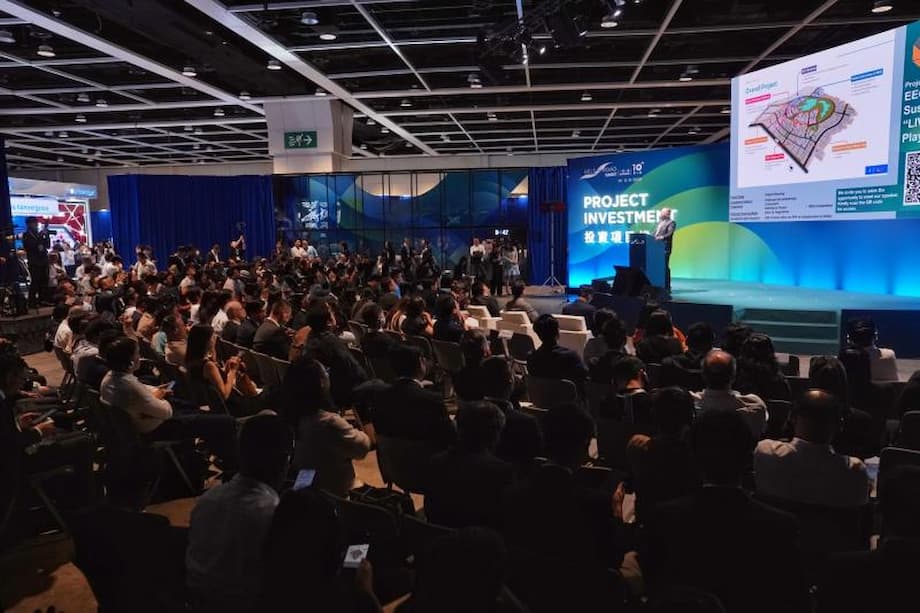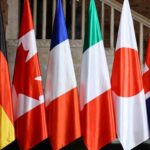Why Thailand is courting Hong Kong for its EEC smart city
Thailand is turning to Hong Kong’s capital markets to help pay for a next generation smart city inside the country’s flagship Eastern Economic Corridor. The plan, outlined by Eastern Economic Corridor Office secretary general Chula Sukmanop during a high profile forum in Hong Kong, would tap the city’s role as a global financial center to bring in private investment for a 24 square kilometre urban hub designed to support advanced manufacturing, technology and high quality urban living.
- Why Thailand is courting Hong Kong for its EEC smart city
- Inside the EEC, goals for a new smart city
- Where the money could come from in Hong Kong
- Belt and Road debate and the Thai case
- EV investment in the corridor and factory jobs
- Trade tensions, rules of origin and Thai safeguards
- Tenders, partners and the path to construction
- Smart services test bed, lessons from Bangkok traffic AI
- Risks to watch, land, finance and community
- What to Know
The proposal comes as the corridor, launched in 2017, continues to anchor Thailand’s Thailand 4.0 strategy. The EEC spans three provinces east of Bangkok, Rayong, Chonburi and Chachoengsao. It already hosts major seaports, industrial estates and fast growing electric vehicle supply chains. Hong Kong investors have committed about 2 billion US dollars to EEC projects since 2018, placing the city among the top foreign sources of capital, behind China, Japan and Singapore. While the smart city remains in the conceptual phase, Thai officials are working with the Hong Kong Trade Development Council on how to structure tenders that can draw global bidders and long term financing.
What officials want from Hong Kong
For Thailand, the attraction is Hong Kong’s mix of deep liquidity, legal and advisory expertise, and a large pool of institutional investors that understand Asian infrastructure. Speaking at the 10th Belt and Road Summit in Hong Kong, Chula said the city’s funding reach makes it a natural place to raise money for complex projects that need both equity and debt solutions.
Chula also addressed the Belt and Road Initiative debate that often surrounds large projects. He cast the Chinese backed program as a tool that can be used well or poorly, depending on domestic planning and oversight.
Chula Sukmanop, secretary general of the Eastern Economic Corridor Office, said the Belt and Road Initiative is a tool, and its effectiveness depends on how a country uses it.
Inside the EEC, goals for a new smart city
The proposed smart city would sit inside a zone that already concentrates ports, industrial estates and the U Tapao aviation area. Officials describe the city as business friendly, with streamlined regulations, digital government services and a master plan that ties energy, water, transport and data systems together. The target is to create a place where advanced manufacturers, research labs and service companies can set up quickly, recruit talent and connect to global supply chains.
While designs are not final, the concept points to smart mobility, climate resilient engineering and high speed connectivity. That could include district energy and cooling networks, rooftop solar where feasible, automated waste and water systems, and fiber networks ready for 5G scale services. Urban logistics hubs and shared mobility fleets would aim to reduce congestion. A digital twin, a detailed virtual model of the city, could help planners test changes to traffic signals, power use and land plots before they are built in the physical world.
Smart cities only work if daily services are reliable and affordable. That is why Thai planners are likely to package the project into multiple tenders, such as utilities, transit, data platforms and real estate. This splits risk across different investors and operators, and lets the state set performance standards for each component. It also opens room for international firms to partner with Thai companies on technology transfer, training and local hiring.
Where the money could come from in Hong Kong
Hong Kong’s toolkit covers a wide spectrum of structures that fit large urban programs. Project finance banks can arrange syndicated loans for utilities and transport lines. Asset managers can subscribe to project bonds, including green and sustainability linked bonds tied to climate targets. Real estate investment trusts can hold completed commercial assets and return cash to developers. Private equity and infrastructure funds can take stakes in operating companies that run power, water and transit systems.
Green finance is especially relevant. Investors increasingly want projects that cut emissions and improve climate resilience. If the EEC smart city includes district energy, efficient buildings and low carbon transit, that can support labeled green or sustainability bonds. Hong Kong hosts a large pool of arrangers, rating agencies and verifiers that certify such instruments for global buyers.
Confidence in Hong Kong’s markets also matters. Financial Secretary Paul Chan has said the city expects to return to an operating account surplus in the 2025 to 2026 fiscal year, helped by active equity trading and new listings. He highlighted the link between market turnover and government revenue from stamp duties.
Paul Chan, Hong Kong’s financial secretary, said that for every HK$100 billion of transactions, about HK$130 million in stamp duty is expected.
For Thailand, this depth means the smart city can access multiple channels over time rather than rely on a single lender. Pre construction work might be funded by budget allocations and development partners, early utilities by bank loans, and later stage assets by project bonds once cash flows are proven. The ability to refinance through Hong Kong when conditions are favorable can lower lifetime costs.
Belt and Road debate and the Thai case
The Belt and Road Initiative continues to spark discussion about debt, transparency and local benefits. Thailand’s pitch stresses that outcomes depend on host country screening, contract design and cost control. Thai officials argue they have been selective, focusing on projects that bring technology and jobs, and insisting on clear standards for environmental and social impact assessments.
Inside the corridor, Chinese companies have been especially active in electric vehicle and energy projects. Thai authorities point to real employment gains as factories move from testing lines to mass production. They also cite better logistics as a future dividend from rail and airport upgrades that can anchor cargo flows, tourism and aerospace services.
EV investment in the corridor and factory jobs
Electric vehicles have become a centerpiece of EEC activity. From 2019 to 2024, Chinese investors received approvals for projects worth about 8.4 billion US dollars in the wider corridor cluster, with EV manufacturing a leading theme. Industry leader BYD is among companies building plants that can serve Southeast Asia and other export markets. The EV push has already created thousands of jobs for Thai workers as assembly lines shift from imported talent to local teams.
Chula said factories now employ around 7,000 Thai workers in the corridor’s EV sector. Training programs with vocational schools and universities aim to grow that number, covering battery assembly, power electronics, robotics and quality control. The smart city is expected to host suppliers and research partners that can shorten product cycles and raise local value added.
Productivity gains come from clustering. When chip makers, battery specialists, software teams and logistics firms operate near each other, problems get solved faster and components move on shorter routes. The corridor’s seaports and expressways already give manufacturers a time advantage. Adding a connected urban hub with serviced land, data centers and flexible lab space can accelerate that effect.
Trade tensions, rules of origin and Thai safeguards
Trade policy has become a moving target. As companies from China and elsewhere look to build in Thailand to serve the United States and other markets, rules of origin take center stage. These rules decide whether a product counts as Thai, based on the share of local content and processing steps performed in the country. If a factory imports most parts and performs minimal assembly, it may fail to qualify for tariff preferences.
Thai officials have signaled they will manage production rules to avoid turning Thailand into a route for tariff avoidance. That means careful tracking of local content and supply chains. It also means testing products against the stricter thresholds some markets are considering, in the range of 60 to 80 percent content in some cases, compared with the common 40 percent baseline used in many trade deals.
The government has used financing tools to cushion shocks when tariffs rise or demand shifts. The Government Savings Bank has been deployed in the past to extend soft loans to businesses under stress from tariff changes, giving small and medium companies breathing room on working capital while they adjust sourcing and production.
Tenders, partners and the path to construction
With the smart city still on the drawing board, Thailand is shaping how to package contracts and select partners. The EEC Office is consulting the Hong Kong Trade Development Council on market sounding and tender design, a step that can widen the field of bidders and improve pricing. Competitive tenders tend to separate land development from essential services, and to set measurable service levels for power, water, transit and digital platforms.
Policy makers can also stage the buildout. Early phases can focus on trunk infrastructure, such as roads, power lines and water plants. Later phases can bring in mixed use districts, university or institute campuses, and dedicated zones for health tech, automotive electronics and other target sectors. If designed well, early tenants help pay for later works, reducing reliance on public funds.
Thailand and Hong Kong have built a network of events and industry links around smart urban technology. The Hong Kong Smart Living Pavilion, organized by the Smart City Consortium and supported by the Hong Kong Trade and Industry Department, showcased solutions in Bangkok in 2023. These exchanges create contacts that can translate into consortia when tenders open.
Smart services test bed, lessons from Bangkok traffic AI
Thailand already runs pilots that mirror smart city features. In Bangkok, the city administration partnered with Google on a program that uses big data and artificial intelligence to adjust traffic signals at peak hours. The goal is to cut queue times and reduce air pollution from idling vehicles. Residents can report hot spots through the Traffy Fondue platform, giving engineers real time feedback.
The EEC smart city can copy and scale approaches like this. A data platform that ingests information from sensors, transit systems and citizen reports can identify where to add a bus lane, increase signal green time or shift freight movements to off peak windows. These adjustments rarely grab headlines, yet they are the daily work that keeps a city moving, and they add up to better air quality and shorter commutes.
Risks to watch, land, finance and community
Large urban projects face real constraints. Transparent plans and steady execution will decide whether the EEC smart city attracts the talent and capital it seeks. The main pressure points fall into a few categories.
- Land assembly and zoning, ensuring fair compensation and clear titles before work begins, to avoid delays.
- Cost control, limiting scope creep and indexing contracts to manage inflation in materials and labor.
- Financing mix, avoiding a heavy reliance on short maturities that raise refinancing risk.
- Environmental safeguards, meeting Thai and international standards on air, water and habitat.
- Community buy in, providing reliable services and affordable housing so workers can live near jobs.
- Cybersecurity, protecting data and operational technology in energy, water and transit systems.
- Vendor lock in, using open standards so the city can switch providers as technology changes.
Mitigation tools are well known. Public consultation and environmental studies reduce conflict. Pay for performance contracts create incentives to meet service targets. Independent monitors can track delivery and publish results. A diversified investor base lowers the chance that one shock closes the financing window. If Hong Kong channels are paired with domestic banks and regional partners, the project gains resilience.
What to Know
- Thailand plans to use Hong Kong’s financial hub to raise capital for a 24 square kilometre smart city inside the Eastern Economic Corridor.
- The EEC spans Rayong, Chonburi and Chachoengsao and anchors the Thailand 4.0 industrial strategy.
- Hong Kong investors have committed about 2 billion US dollars to EEC projects since 2018, placing the city among the corridor’s top foreign investors.
- Chula Sukmanop said the Belt and Road Initiative is a tool that depends on how countries use it, and cited jobs from EV factories as evidence of benefits.
- Chinese EV and energy projects in the corridor have grown, with around 7,000 Thai workers now employed in EV factories.
- Thai officials aim to prevent tariff avoidance by managing local content and rules of origin as more firms consider relocating production.
- Financing routes in Hong Kong could include syndicated loans, project bonds, green bonds, infrastructure funds and real estate investment trusts.
- The project remains in the conceptual stage, with tender design and partner selection set to decide cost, pace and quality.




